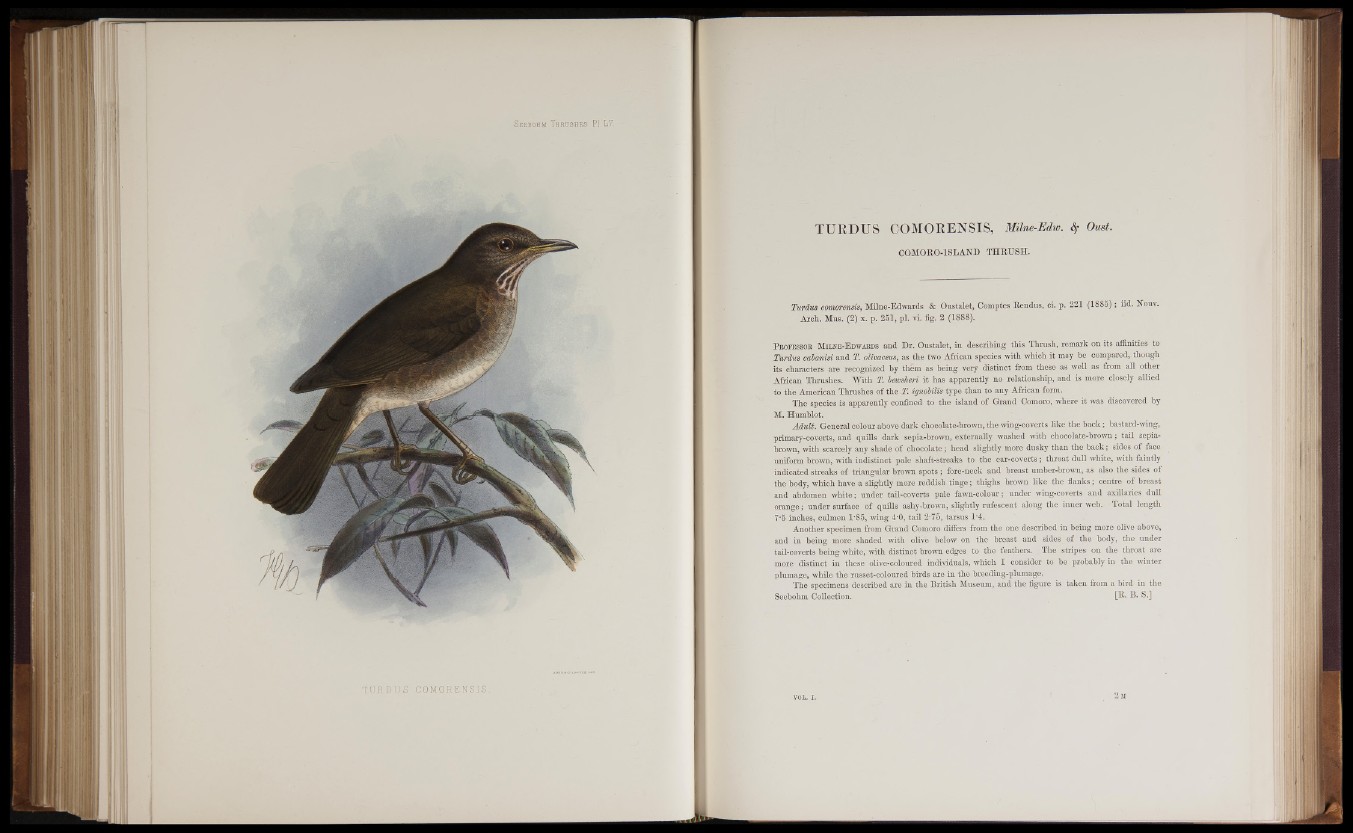
TURDUS COMORENSIS, Milne-Edw. Sf Oust.
COMORO-ISLAND THRUSH.
Turdus comorensis, Milne-Ed wards & Oustalet, Comptes Rendus, ci. p. 221 (1885); iid. Nouv.
Arch. Mus. (2) x. p. 251, pi. vi. fig. 2 (1888).
P rofessor M ilne-E dwards and D r. Oustalet, in describing this Thrush, remark on its affinities to
Turdus cabanisi and T. olivaceus, as the two African species with which it may be compared, though
its characters are recognized by them as being very distinct from these as well as from all other
African Thrushes. With T. bewsheri it has apparently no relationship, and is more closely allied
to the American Thrushes of the T. ignobilis type than to any African form.
The species is apparently confined to the island of Grand Comoro, where it was discovered by
M. Humblot.
Adult. General colour above dark chocolate-brown, the wing-coverts like the back; bastard-wing,
primary-coverts, and (prills dark sepia-brown, externally washed with chocolate-brown; tail sep’ia-
brown, with scarcely any shade of chocolate; head slightly more dusky than the back; sides of face
uniform brown, with indistinct pale shaft-streaks to the ear-coverts; throat dull white, with faintly
indicated streaks of triangular brown spots; fore-neck and breast umber-brown, as also the sides of
the body, which have a slightly more reddish tinge; thighs brown like the flanks; centre of breast
and abdomen white; under tail-coverts pale fawn-colour; under wing-coverts and axillaries dull
orange; under surface of quills ashy-brown, slightly rufescent along the inner web. Total length
7’5 inches, culmen T85, wing AO, tail 2-75, tarsus T4.
Another specimen from Grand Comoro differs from the one described in being more olive above,
and in being more shaded with olive below on the breast and sides of the body, the under
tail-coverts being white, with distinct brown edges to the feathers. The stripes on the throat are
more distinct in these olive-coloured individuals, which I consider to be probably in the winter
plumage, while the russet-coloured birds are in the breeding-plumage.
The specimens described are in the British Museum, and the figure is taken from a bird in the
Seebohm Collection. B. S.]